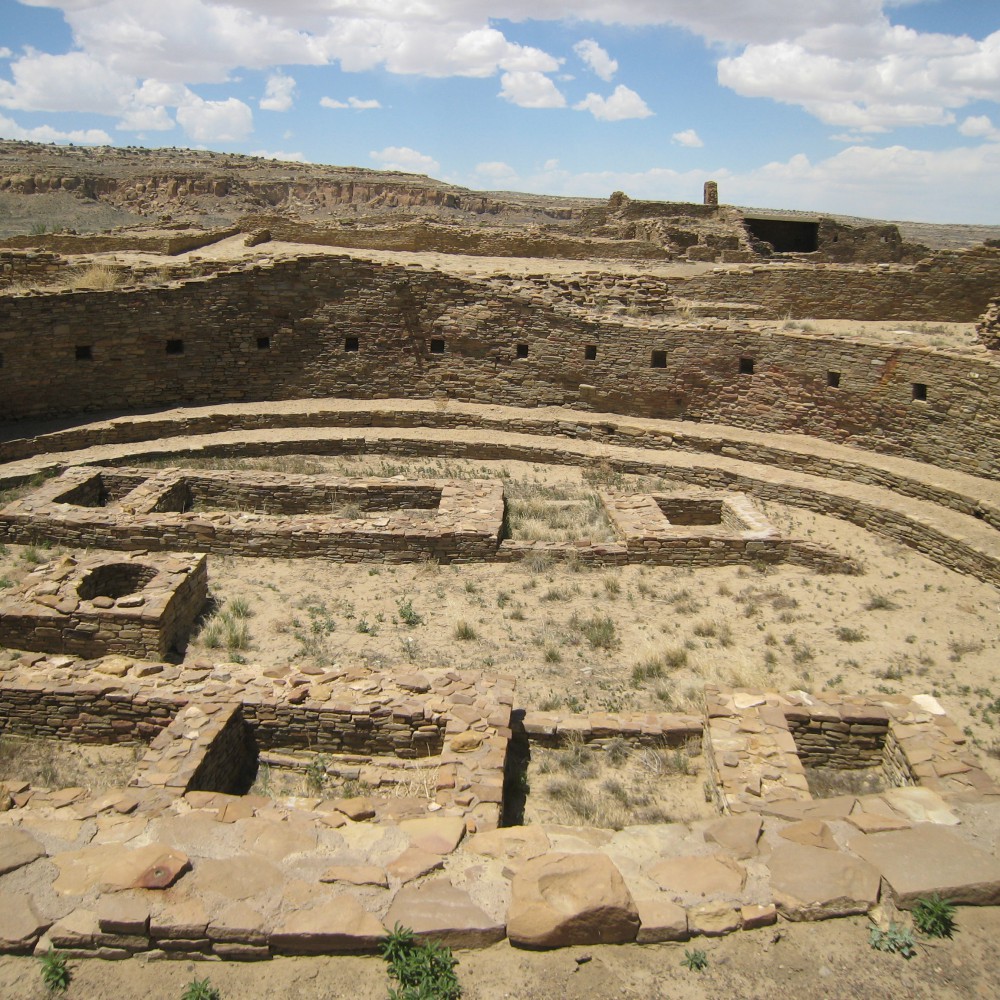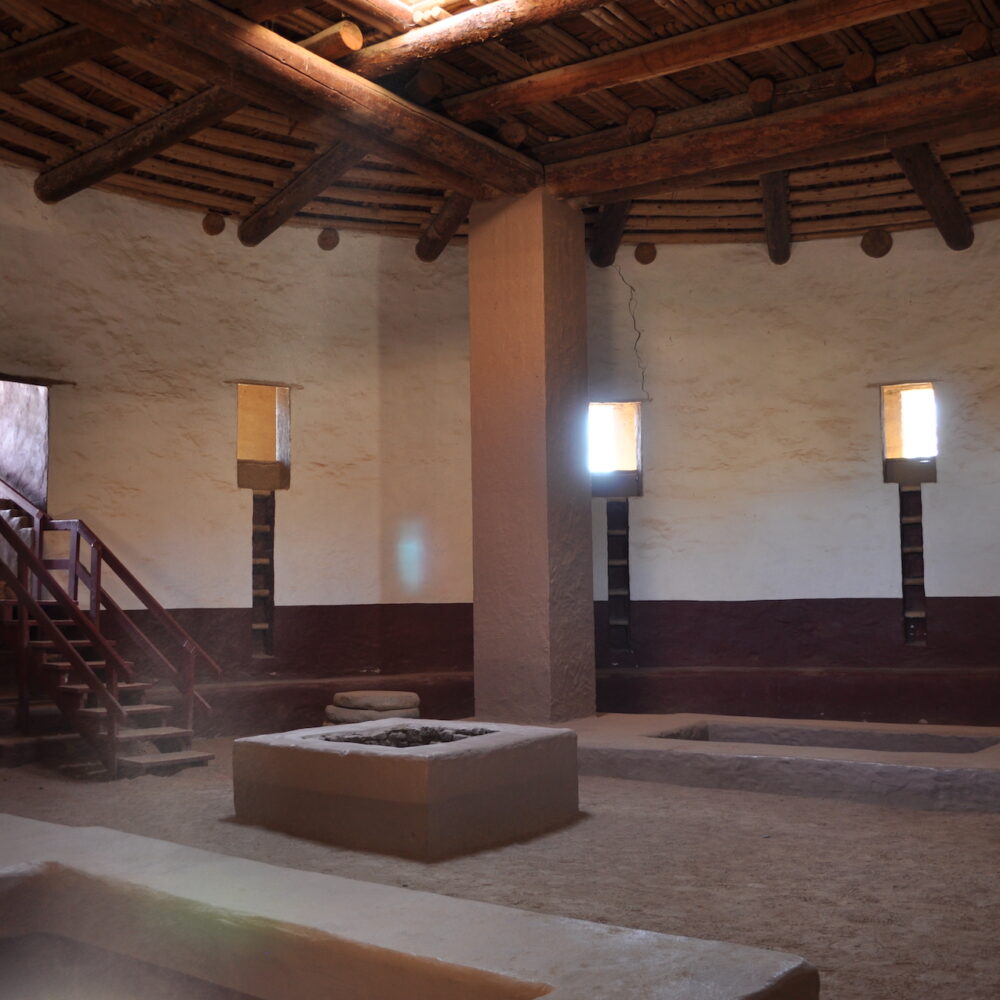
Located in northwestern New Mexico, Chaco Canyon is one of the most visually stunning archaeological sites in the Southwest. The Ancient Puebloans, known also as the Anasazi, are believed to have appeared in the Four Corners region as early as 1200 BC. In the mid 800s, the Chacoan culture experienced a phenomenal growth with the construction of several magnificent great houses including Pueblo Bonito. Sophisticated architecturally, these great houses were aligned to solar, lunar and cardinal directions. By AD 1050, Chaco was the predominant economic and cultural center of the region and remained so until about AD 1300. Scholars believe that severe drought conditions may have resulted in the depopulation and eventual abandonment of Chaco Canyon. Join us on a tour of the 6 great houses that are located along the 9-mile long Canyon Loop Drive.


Aztec Ruins National Monument, located near Chaco Canyon, was designated as a UNESCO World Heritage Site in 1987. The site’s name can be attributed to Father Francisco Velaz de Escalante who may have believed the area was inhabited by the Aztec Indians of Mexico.
The structures at Aztec Ruins National Monument were built in the early 1100s most probably to serve as “a public ceremonial, economic and political center”. Aztec was a bustling well-designed community with several great houses and kivas, along with roads.
The Ancestral Puebloans who constructed the complex at Aztec were influenced by Chaco architecture and ceremonial life but, as Chaco Canyon’s influence in the region waned, Aztec may have taken on more importance as a cultural until the late 1200s. It is conjectured that the people may have moved away because of drought, or because of social, religious or political reasons. The Ancestral Puebloans migrated south along the Rio Grande and west into Arizona, leaving behind impressive great houses and a 40-foot diameter semi-subterranean kiva that is “the oldest and largest reconstructed building of its kind”.

Located in southern Colorado, Mesa Verde National Park has over 4,700 archaeological sites with several notable and well-preserved cliff dwellings, pithouses and masonry towers. The Ancient Puebloans who inhabited the area from 500 A.D. to 1300 A.D. farmed the mesa tops and built elaborate stone structures.
Take a scenic drive up to the mesa tops and visit spectacular cliff dwellings that include the Spruce Tree House, the Balcony House and Square Tower House. There are ranger-led tours to several sites that must be booked in advance but simply driving the Mesa Top Loop or out to Wetherill Mesa will offer stunning vistas.

